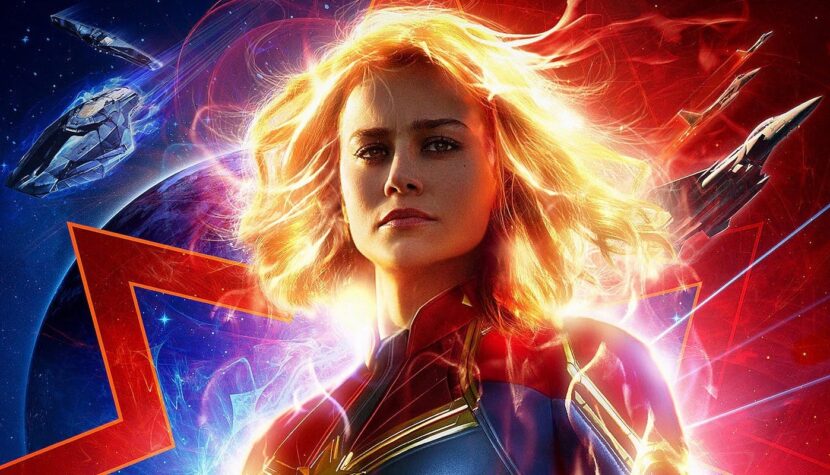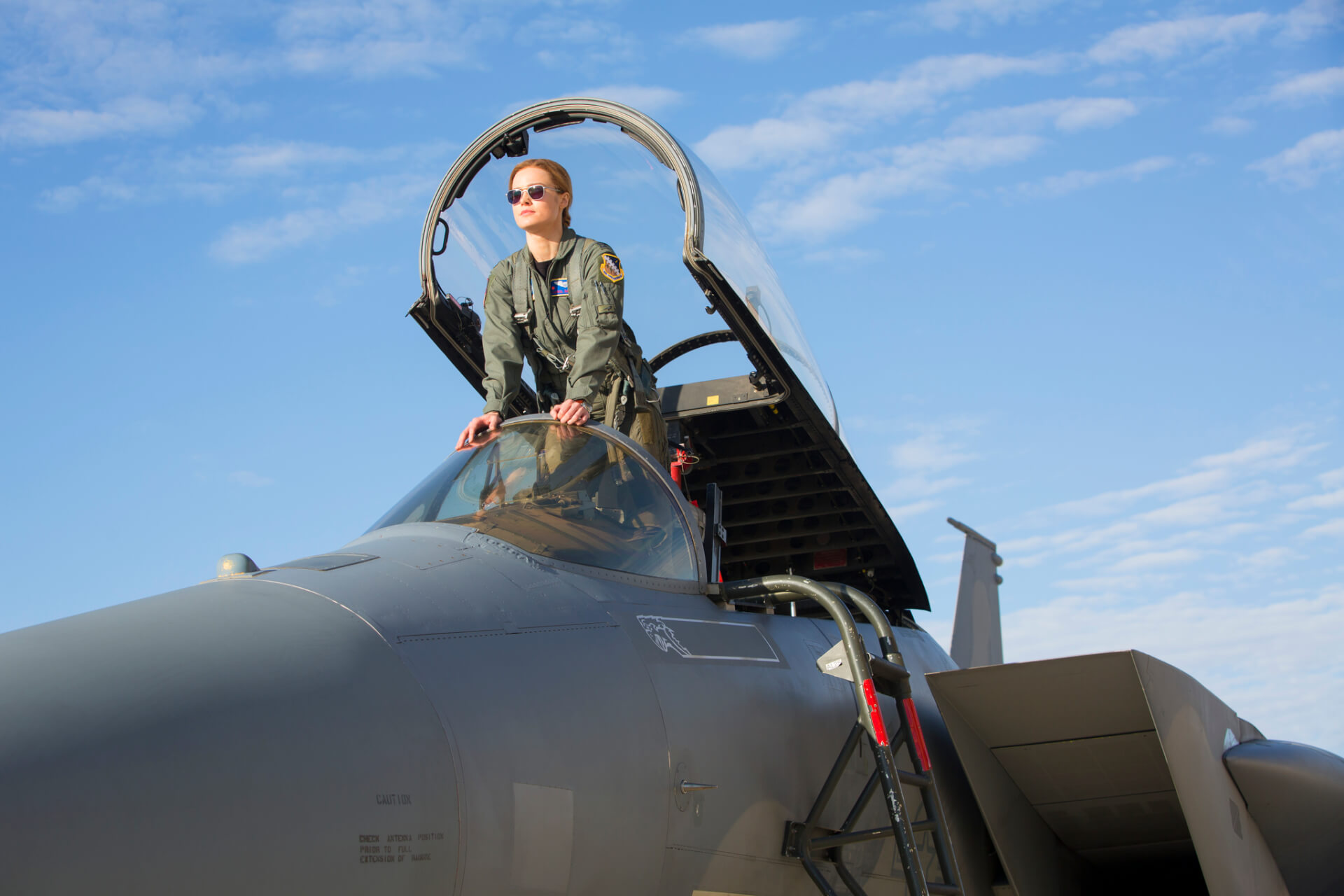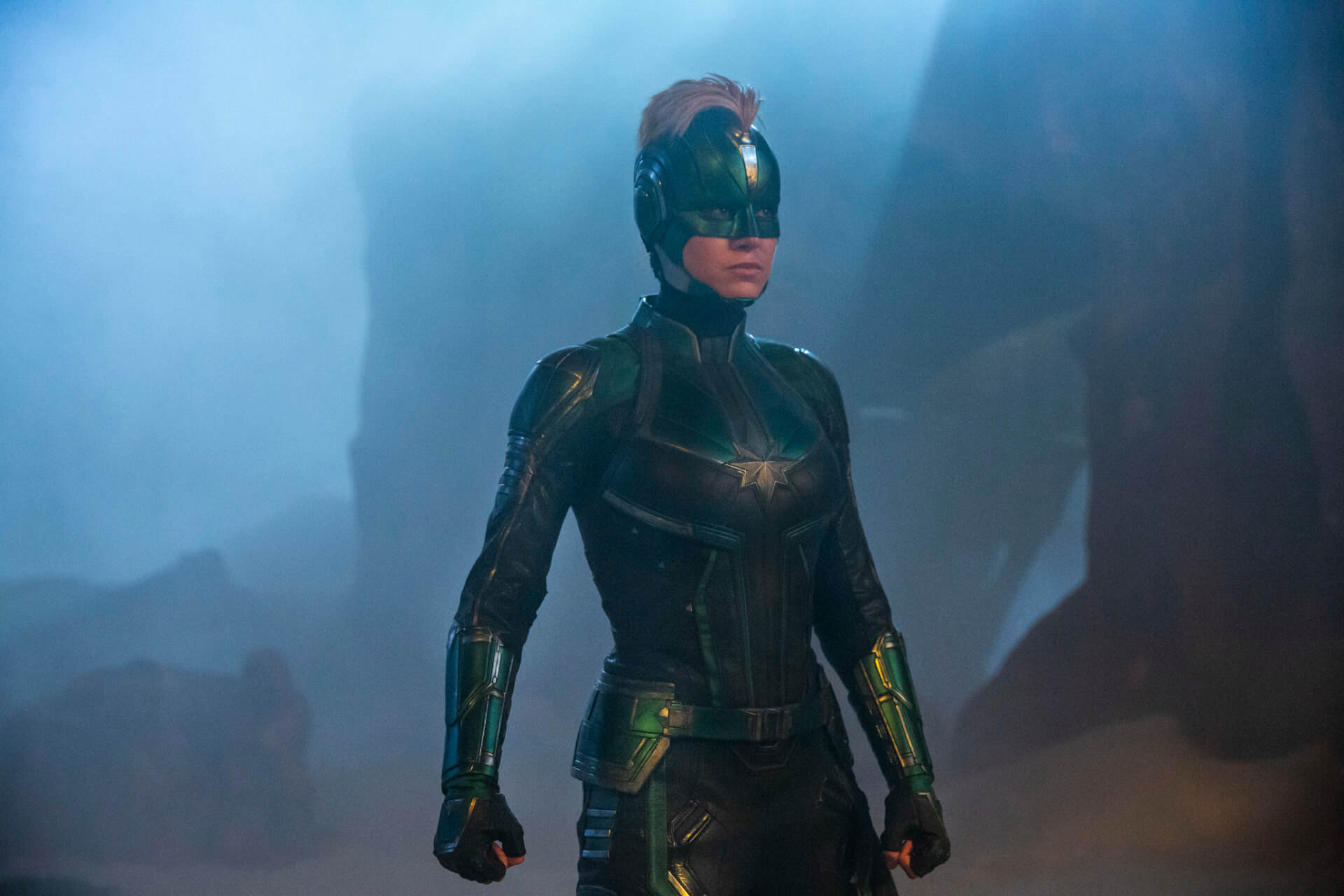CAPTAIN MARVEL. Strong and Enchanting Woman in a Boring Marvel Film

Many windy controversies have surrounded this Marvel Studios film, mainly due to, let’s not be afraid to call it, the online swearing of internet losers. Add to that the nonsense claiming that Brie Larson said she doesn’t want white men to talk to her in interviews, representatives of the so-called majority. There’s no quote confirming this, and there’s a lack of a clear denial from the actress. All of this is a colorful triviality that has nothing to do with the authentic level of the film, because somewhere between these clickbait trivialities, a somewhat unsuccessful superhero movie with painfully unused potential desperately waves its hands.
Carol Danvers, a fighter pilot, gains supernatural abilities after contact with the extraterrestrial Kree race, perhaps surpassing everything we’ve seen in the Avengers team so far. It would be unfair to elaborate more on the plot; it’s better if many surprises are discovered during the screening (especially since there aren’t many), but one can guess that we are getting a classic tale of responsibility and the search for identity. In the background, Nick Fury still has hair, a few clues leading to the future of the Marvel cinematic universe, the ginger cat Goose (whose presence is part of very forced jokes), and the early nineties.
It must be mentioned—very blandly woven into the plot. A few scattered gadgets and VHS tapes, Carol’s grunge attire, and randomly played songs that have nothing to do with the film’s plot—it’s not enough to capture the essence of the era. There aren’t many building blocks from that decade, and their fetishization is painful. Mocking the slowness of computers would make more sense if it related to a hacking scene; instead, this joke hangs somewhere between Coelho’s “times are changing” and “Moore’s law is merciless.” There is a cinematic soullessness in this because the camera focuses on a detail that probably came from some nostalgia generator in the minds of the screenwriters, but it ignores the background that would help the viewer immerse themselves more deeply into the world.

I remember a scene from Spider-Man: Homecoming where a kid in a tiger costume ran through a school corridor. It was funny and, at the same time, a brilliantly original way to illustrate the sometimes surreal state of adolescence. In Captain Marvel, there isn’t a single joke about the environment that delves into deeper waters of wit. The essence of it is in scenes where Carol, for a significant part of the film, wears a Nine Inch Nails shirt, but when she fights opponents, she goes into battle with a blaring Nirvana hit. Why? Does the song in any way illustrate the character or events? No, apparently the analysis concluded that more people would associate Cobain’s band than NIN, which already gained some place in the universe from the first Avengers trailer. It’s good that this radio hit is in the background because, besides it, the soundtrack is almost nonexistent, but these songs shouldn’t pop up suddenly, trying to cling to the plot with a trace amount of saliva. For still traumatized fans of comic book adaptations, this may be a reminder of the illness they contracted during the screening of the pop-cultural aberration called Suicide Squad.
Similarly with the technical layer—action scenes, color saturation, and shots resemble a science fiction TV series shot for the CW channel, and that’s from the previous decade. It’s a pity because stylistically, it could have been the most beautiful spectacle from this “down-to-earth” Marvel installment. When the heroes fight and throw themselves against walls, sometimes it’s unclear where their strength comes from, how superpowers work, and if there’s any threat. So, we miss the Russo brothers, who would give some physics rules to these cosmic absurdities. When, in a car chase scene, a heavy part of another vehicle falls onto Fury’s hood, we don’t even see a scratch, even though it’s not an armored vehicle. A few seconds later, we see a crash, not very spectacular, and, above all, culminating in a complete lack of tension.

Anna Boden and Ryan Fleck undoubtedly excel in drawing the background, especially the interesting character of Captain’s friend, played by Lashana Lynch, or Talos, whom Ben Mendelsohn effortlessly and sensibly embodies despite tons of rubbery facial prosthetics. Samuel L. Jackson, on the other hand, seems tired of playing Fury for the first time, although he takes on the most number of jokes. There’s something sad about watching an aging actor with a rejuvenated face, with the script shouting “have fun,” while his body just wants to die as far away from this chaos as possible. I won’t mention the rest—Jude Law is tough and valiant here, and Lee Pace only briefly goes into villainous madness or a few sinister expressions, all against the backdrop of cosmic flashes that would like to evoke the atmosphere of Independence Day, borrowed from the set of the sequel.
And right in the middle, there’s Brie Larson, smiling, graceful, but sometimes distant, not stemming from the script but from standing between several versions of her character, which are not allowed to fully resonate. A superhero who, I have the impression, is still waiting for a film about the wonderful Captain, one that keeps her close to one narrative. And for me, these could even be personal matters. Set in some (whether human or cosmic) world, torn between omnipotence and obligatorily imposed weaknesses and emancipatory dialogues. When the caption appeared that the main character will return in the next film in the series, for the first time after watching a Marvel movie, I nodded, thinking: hopefully as soon as possible. And hopefully, this time with the soul of a human being.

